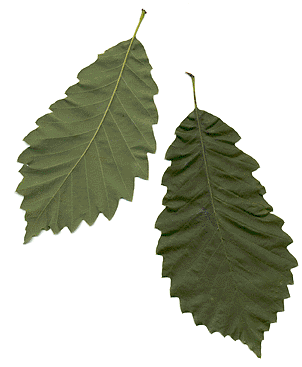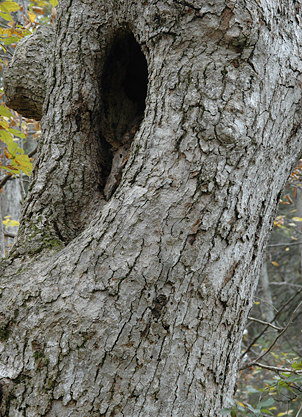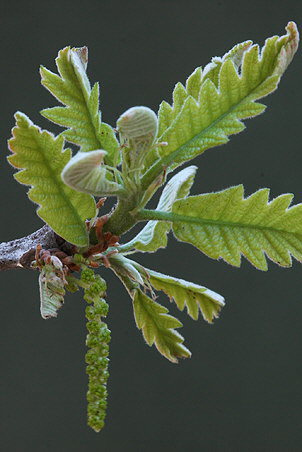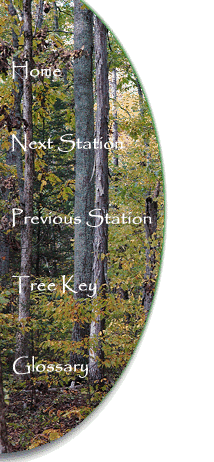| |
|
| |
 |
| |
Chinquapin Oak Leaf |
Identification:
The leaves
are simple,
alternate, paler and
downy below and 4 inches to 6 inches
in length. The margin of the leaves has large teeth that
are tipped with glands (but not bristles).
| |
|
 |
|
|
Chinquapin Oak Bark |
The bark of the Chinquapin Oak is
ashy-gray with shallow fissures. The bark breaks into large
flaky scales on older trees.
Cavities like the
one seen in this tree are used for shelter by many woodland
creatures, including owls like the Barred Owl.
| |
|
| |
 |
| |
Emerging Leaves and Catkin |
The flowers of the Chiquapin Oak
are catkins and appear in April along with the emerging leaves.
This species is monoecious, so both the male and female catkins
appear on a single tree.
Other Uses
and Lore:
Native Americans
ground the acorns into flour for cooking. Pioneers used the
very heavy and durable wood for all types of construction, including
split rail fences. Railroads used the wood for railroad ties,
and much timber was used for bridge planking.
The
Trail From Station Six to Station Seven
As you move
from Station Six to Station Seven, look for wildflowers along the
edges of the trail. The small, umbrella-like flower of the
May Apple can be found in many spots along the tree trail.
Station Seven will be on the right side of the trail.
|

